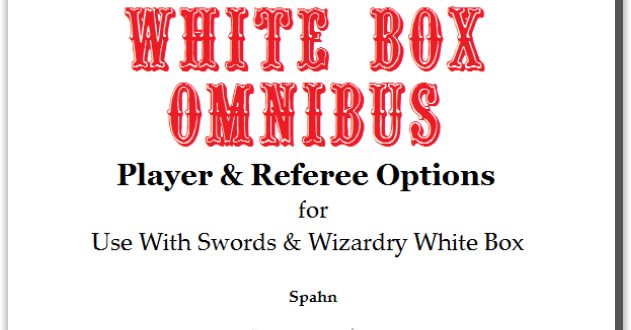I won a copy of White Box Omnibus, by +James Spahn of Barrel Rider Games on the Happy Jacks Podcast for Swords & Wizardry Appreciation Day.
Things have kept me busy since then. After White Star came out and I reviewed it, I figured I better hurry up and read through the Omnibus and do my promised review.
James’ own introduction to the text explains it well:
White Box Omnibus is a compilation of six previously published
products: White Box Companion, White Box Bestiary, White Box Treasures, White Box Adventures: The Wererat’s Well, White Box Adventures: The Wizard’s Tower and White Box Adventures: The Dragon’s Hoard. But a few extras have been added. In addition to cleaning things up a bit, there are a few new things you’ll find.
The Monk has been added as a player character class. It is written in the spirit of Arneson’s Supplement II, but streamlined to fit WhiteBox. You’ll find simple, easy to implement rules for introducing powerful magical artifacts into your campaign along with new monsters in the bestiary.
The three adventures featured in White Box Omnibus have now been augmented by an appendix – The Willow Valley Gazetteer. It’s a mini-campaign setting which can be used to tie the three adventures together, or even continue having adventures in that region.
Section 1 – Class options – Contains variations on standard classes that give bonuses in one area, but limitations in another. Such as the “sub-class” of cleric, the healer, who can use a healing touch once per day but has a -1 on to hit rolls.
Bard Class – This is a simple class designed to work within Swords & Wizardry and other D&D clones, instead of the kludge of AD&D.
Druid Class – A version of a cleric with a Forestry ability that allows tracking, passing without trace, or dealing with wild animals.
Monk Class – Similar to the class in AD&D, with house rules suggestions to make it more like the AD&D monk.
Paladin Class – With the exception of leaving out the warhorse, this is the paladin we recognize.
Ranger Class – With the Forestry ability, like the Druid.
Thief Class – Single skill called Thievery using a 1d6 mechanic based on level. This covers all the thief skills in a big separate table in AD&D. There is a house rule for climbing that add a bonus to the roll.
Section 2 Magic Items – A list of very interesting armor and shields.
potions, scrolls, rings, staves, wands, weapons, and three pages dedicated to miscellaneous magic items. The miscellaneous items has a house rule about “purposed magic items”, i.e. Artifacts.
Section 3 – Bestiary – This includes many creatures that are well-known from other versions of OD&D & AD&D.
For example, Brain Lord – Squid headed humanoids p. 39-40.
Section 4 – Adventure – Wererat’s Well 15 pages including the introductory illustration and map by Matt Jackson [G+ account deleted before archived.].
Section 5 – Adventure – The Wizard’s Tower – 20 pages including the introductory illustration and map by Dyson Logos.
Section 6 – Adventure – The Dragon’s Hoard – 18 pages including the introductory illustration and map by Matt Jackson
[G+ account deleted before archived.] .
Appendix – The Willow Valley Gazetteer – 22 pages including the village map by Matt Jackson
[G+ account deleted before archived.] , and an area map done in Hexographer. There is a d20 rumor table for the village and a couple of pages on communities of halflings, dwarves, and elves. This mini-campaign setting has a detailed village, and the area map ties it all together into the three adventures and several of the new creatures and items.
I am a big fan of AD&D. Mostly because it is what I knew and played for so long. I am growing to be a major fan of simple. Less rules and less “fiddly bits” that get in the way.
This large collection of material that supplements Swords & Wizardry White Box to give it many of the things I like about AD&D, or supplemental material from the later LBB’s. It also streamlines them and makes them easy to use, like the bard. In AD&D, the bard class is a mess. I don’t know anyone who started as a fighter, changed to a thief prior to getting the benefits of a 9th level fighter, etc.
The simple bard class presented here, plus the simplified single skill abilities for druids, rangers, and thieves make it easy to avoid paper shuffling and digging through the manual.
The magic items are new and interesting. They have given me many ideas.
I also like how James separates out ideas for house rules in grey highlighted text.
The simplicity of what is presented here is also modular, so that one can pick and choose what you want to use, and easily house rule things that you feel are missing or “not your way of doing things.”
I only skimmed the three adventures. They are clearly presented and to the point. There is enough detail to help out the DM and enough openness to easily supplement the material or drop it in to an existing campaign.
The gazetteer is a village with a map of the village and an area map that ties the three adventures together with the setting. This could easily be the start of one’s own sandbox campaign, or be dropped in as a new area to explore. It is a good model of one way to build a sandbox.
The layout is well done and the whole thing is easy on the eyes and easy to read on a screen.
Just as with the recent White Star, I recommend the White Box Omnibus!

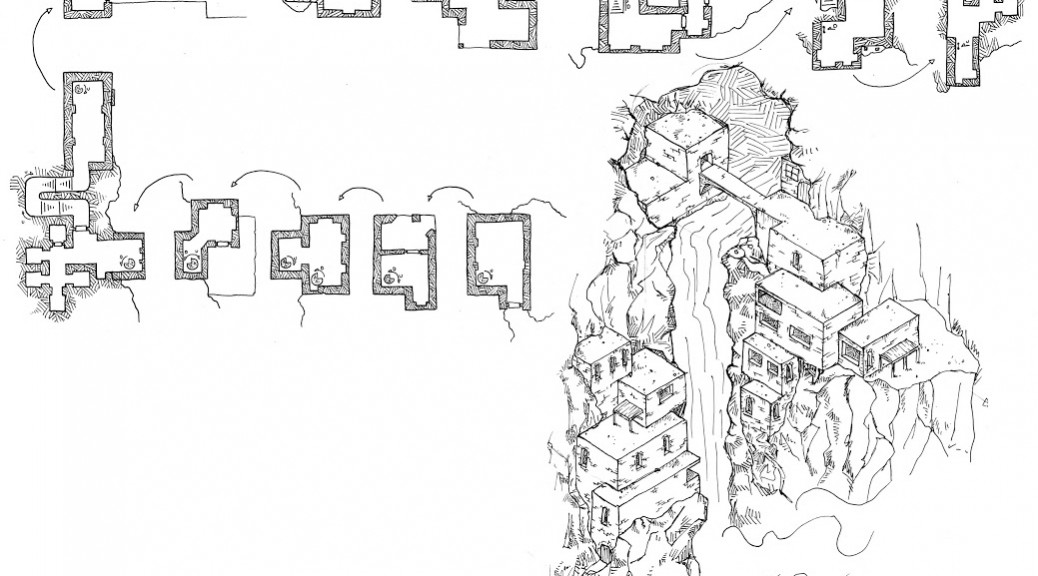
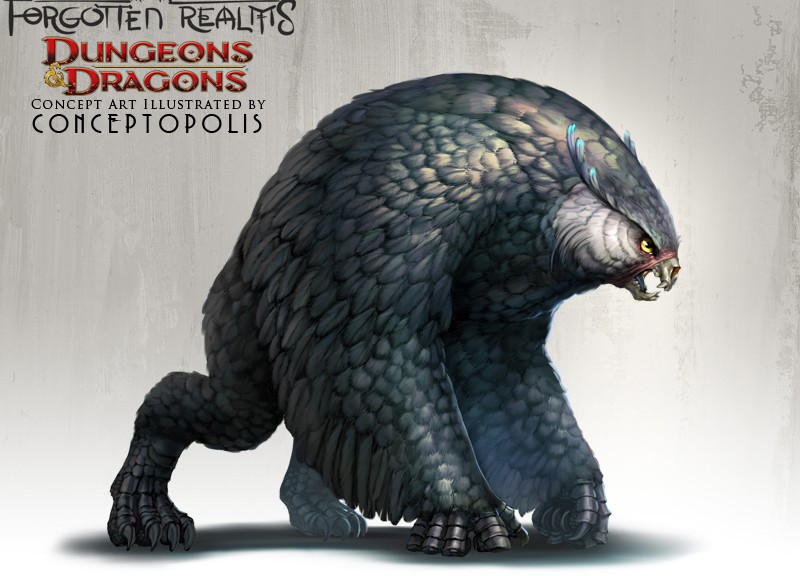

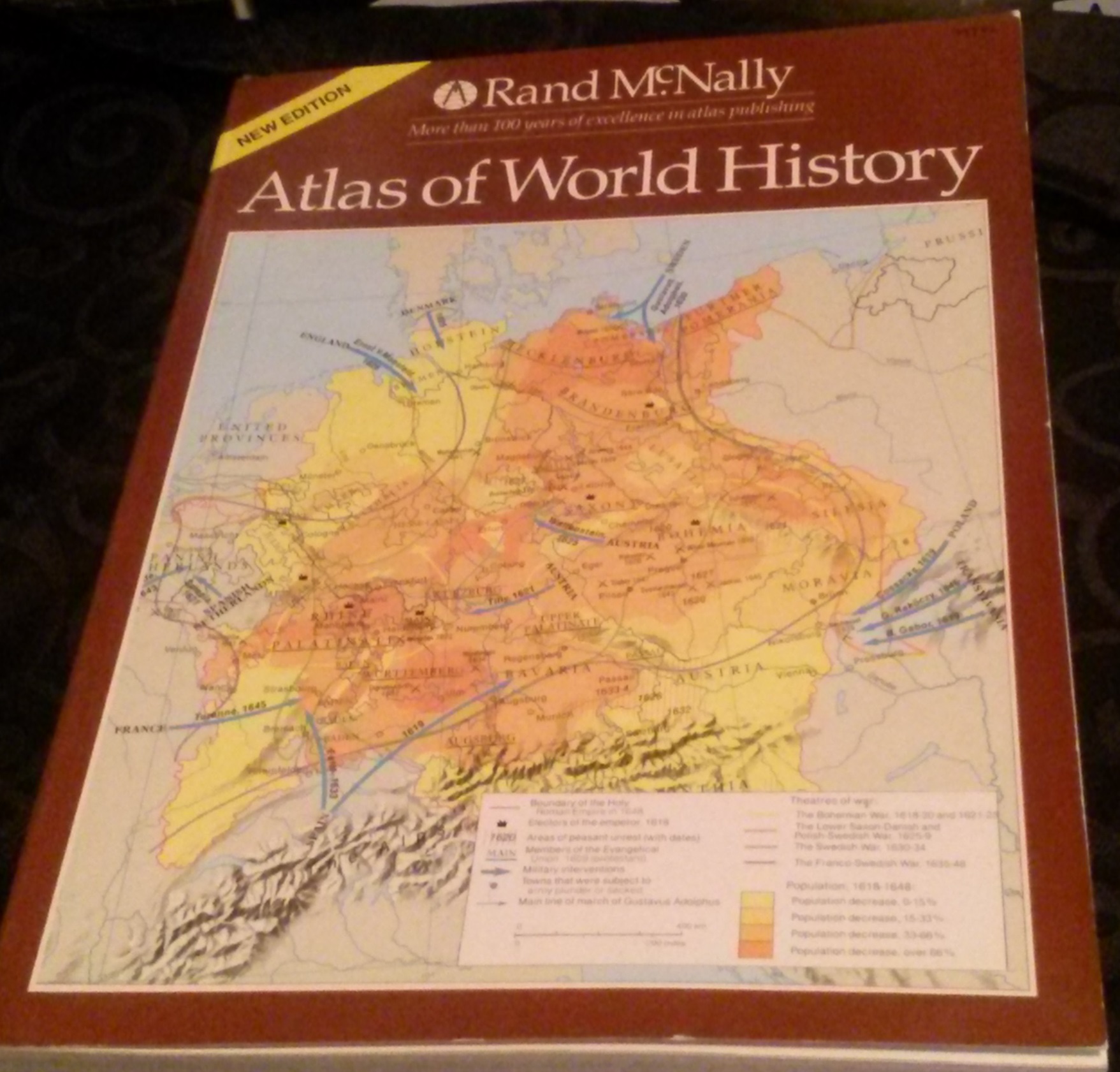
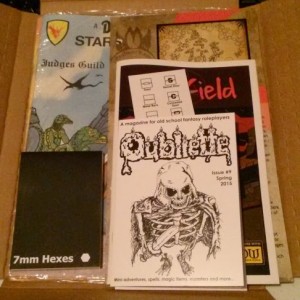
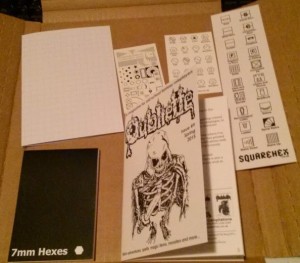


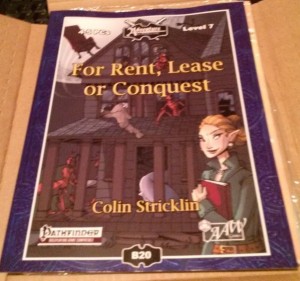
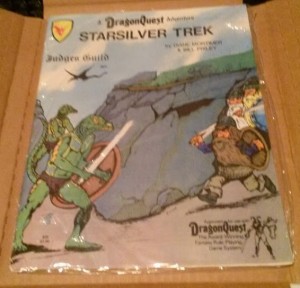
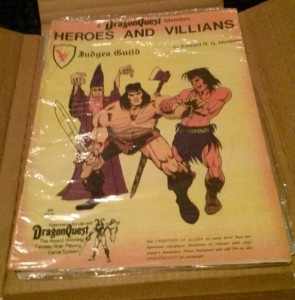
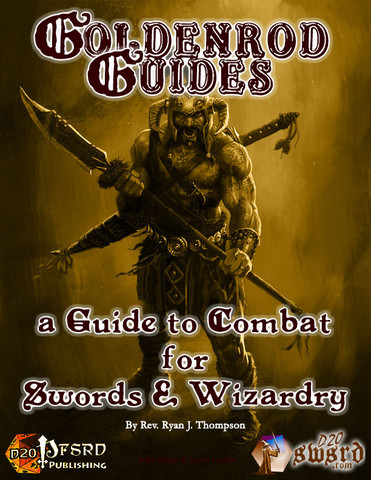
![A-to-Z Reflection [2015]](https://followmeanddie.com/wp-content/uploads/2015/05/A-to-Z-Reflection-2015-Lg.jpg)

